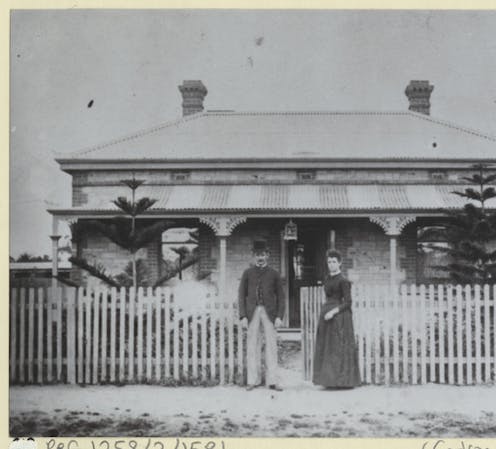Who were they and what did they do?
- Written by Alice Neikirk, Lecturer, Criminology, University of Newcastle

This year marks a significant milestone for women in policing: the 125th anniversary of the first official recognition of a police matron in Australia.
However, women worked in this role for at least 50 years before receiving official recognition.
Known as “police matrons”, these women opened the door for other women to move into the police force as officers, yet their role is still unrecognised or dismissed as an extension of her husband’s policing duties.
While many Australians will have never heard of them, they were trailblazers for women in law enforcement.
Read more: Hidden women of history: Kate Cocks, the pioneering policewoman who fought crime and ran a home for babies – but was no saint[1]
The female touch in policing
During the Victorian era, it was considered inappropriate for men to touch a woman who was not their wife or an immediate family member. This made men policing women (at least of certain social classes) difficult, particularly if they needed to search a female suspect. To get around this, police began to call on women to search arrestees for them.
Initially, these might have been whoever was nearby – a woman living near the police station[2], for example. But quickly it was recognised that a “female touch” was also helpful for comforting lost children, talking to female victims of crime, and occasionally soothing an unruly male arrestee. Neighbourhood women were not viewed as entirely suited for these more complex roles, but the wives of police officers were.
In Australia, the United States and the United Kingdom, early police stations had both temporary holding cells (a lock-up) and a residence for a police officer. The officer living on site was frequently married – these women became police matrons[3].
Police matrons in the Victorian era searched female offenders, were responsible for lost or arrested children, kept watch over mentally unwell inmates, and occasionally allowed families facing violence at home to stay in the station.
They also performed tasks we would not generally associate with the work of a police officer. They cleaned and maintained the cells, mended clothes, and hosted clothing drives for the poor. The police stations sometimes doubled as neighbourhood medical centres. These were all tasks that fell to the police matron. They fit within assumptions of the period regarding the natural, nurturing role of women[4].
Today, these efforts would be understood as forms of problem-orientated policing: identifying a problem in a community and working with the community to devise solutions for the underlying causes of crime. We cannot go as far as claiming that police matrons started the movement towards problem-orientated policing. But we can recognise that they predated today’s “best practice in policing” model by roughly 150 years.
Read more: Women have made many inroads in policing, but barriers remain to achieving gender equity[6]
Though we know police matrons were working in this field in the mid-1800s, and gained a degree of official recognition in the 1890s, it was not until 1915 that the New South Wales Police Department advertised two positions for women police officers.
These two positions attracted nearly 500 applications[7]. The first two female police officers in NSW were not allowed to wear a uniform and had to sign a waiver releasing the police department of any responsibility for their safety. Their tasks were similar to police matrons – they were responsible for women and children that came in contact with the criminal justice system. It wasn’t until 1979 that female officers in Australia could carry a firearm, though they were required to keep it in their handbag.
Today, women make up over 30% of police in Australia[8] and have reached the highest ranks as police commissioners. Although Australians may not know much about the early police matrons, it was they who, more than 100 years ago, paved the way for all this to happen.
References
- ^ Hidden women of history: Kate Cocks, the pioneering policewoman who fought crime and ran a home for babies – but was no saint (theconversation.com)
- ^ a woman living near the police station (www.clevelandpolicemuseum.org)
- ^ police matrons (electricscotland.com)
- ^ nurturing role of women (www.britannica.com)
- ^ diaries kept by early matrons (curiosity.lib.harvard.edu)
- ^ Women have made many inroads in policing, but barriers remain to achieving gender equity (theconversation.com)
- ^ attracted nearly 500 applications (www.police.nsw.gov.au)
- ^ 30% of police in Australia (www.smh.com.au)













